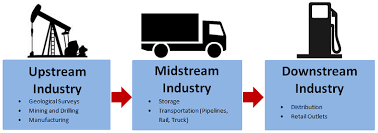Life Cycle Associates has examined the environmental impacts for a wide range of petroleum production processes. We developed a model for thermally enhanced oil recovery (TEOR), which was used to estimate the energy intensity and greenhouse gas emissions associated with TEOR for the CA LCFS petroleum baseline (see report). We also collaborated with Jacobs Consultancy in the assessment of GHG impacts of crude oil options for North America and Europe with support from the Alberta Department of Energy.
Petroleum is produced from crude oil, a complex mixture of hydrocarbons, various organic compounds and associated impurities. The crude product exists as deposits in the earth’s crust, and the composition varies by geographic location and deposit formation contributors. Its physical consistency varies from a free flowing liquid to nearly solid. Crude oil is extracted from geological deposits by a number of different techniques. When comparing transportation GHG emissions, both the tailpipe or tank-to-wheel (TTW) emissions, and the upstream or well-to-tank (WTT) emissions are considered in the full well to wheel (WTW) life cycle. Extracting, transporting, and refining crude oil and bio-based alternatives on average account for approximately 20-30% of well-to-wheels (WTW) greenhouse gas (GHG) emissions with the majority of emissions generated during end use combustion in the vehicle phase (TTW).
The quality of the crude oil used by refineries in conjunction with the complexity of processing dictates the energy requirements for refining, which also affects the product mix and yield. For example, lower quality crude oil is more difficult to refine into transportation fuels, thus the carbon intensity for refining lower quality crudes is higher than for high quality crude.
#petrochemistryconferences #petroleum #oilgasconferences #chemicalconferences #petrochemistryupdates #petroleumlifecycle #upstream #downstream #midstream #LasVegas #USA
.
Petroleum is produced from crude oil, a complex mixture of hydrocarbons, various organic compounds and associated impurities. The crude product exists as deposits in the earth’s crust, and the composition varies by geographic location and deposit formation contributors. Its physical consistency varies from a free flowing liquid to nearly solid. Crude oil is extracted from geological deposits by a number of different techniques. When comparing transportation GHG emissions, both the tailpipe or tank-to-wheel (TTW) emissions, and the upstream or well-to-tank (WTT) emissions are considered in the full well to wheel (WTW) life cycle. Extracting, transporting, and refining crude oil and bio-based alternatives on average account for approximately 20-30% of well-to-wheels (WTW) greenhouse gas (GHG) emissions with the majority of emissions generated during end use combustion in the vehicle phase (TTW).
The quality of the crude oil used by refineries in conjunction with the complexity of processing dictates the energy requirements for refining, which also affects the product mix and yield. For example, lower quality crude oil is more difficult to refine into transportation fuels, thus the carbon intensity for refining lower quality crudes is higher than for high quality crude.
#petrochemistryconferences #petroleum #oilgasconferences #chemicalconferences #petrochemistryupdates #petroleumlifecycle #upstream #downstream #midstream #LasVegas #USA
.

No comments:
Post a Comment